Current and Prospective Radiation Detection Systems, Screening Infrastructure and Interpretive Algorithms for the Non-Intrusive Screening of Shipping Container Cargo: A Review
Abstract
1. Introduction
2. Radiation Detection Principles and Methods
2.1. Properties of Radiation
2.2. Radiation Detectors
3. Radiation Detection Methods for Use in Non-Intrusive Shipping Container Screening
3.1. Requirements of Non-Intrusive Shipping Container Screening Systems
3.2. Currently Deployed Non-Intrusive Shipping Container Screening Systems
3.3. Modelling Screening Systems
4. Advancements in Radiation Portal Monitor Screening Processes
4.1. Source Characterisation Based on Energy Considerations
4.2. Data Processing Algorithms for Improved Sensitivity
4.3. High Energy Resolution Scintillator Radiation Portal Monitors
5. Emerging Methods for Non-Portal-Based Shipping Container Screening
5.1. Spatially Distributed Detector Networks
5.2. Mobile Detector Networks
5.3. Intelligent Data Fusion Methods
6. Conclusions
Author Contributions
Funding
Data Availability Statement
Acknowledgments
Conflicts of Interest
References
- Downes, R.J. Alarming Cargo: Regulation and Control at the UK Border. Terror. Political Violence 2019, 33, 549–571. [Google Scholar] [CrossRef]
- Ferguson, C.D.; Potter, W.C.; Spector, L.S.; Sands, A.; Potter, W.C. The Four Faces of Nuclear Terrorism; Florence: Taylor & Francis Group: Oxfordshire, UK, 2005. [Google Scholar]
- International Atomic Energy Agency. Combating Illicit Trafficking in Nuclear and other Radioactive Material; IAEA Nuclear Security Series No. 6; IAEA: Vienna, Austria, 2007. [Google Scholar]
- Janssens-Maenhout, G.; De Roo, F.; Janssens, W. Contributing to shipping container security: Can passive sensors bring a solution? J. Environ. Radioact. 2010, 101, 95–105. [Google Scholar] [CrossRef]
- Hamrashdi, H.A.; Monk, S.D.; Cheneler, D. Passive gamma-ray and neutron imaging systems for national security and nuclear non-proliferation in controlled and uncontrolled detection areas: Review of past and current status. Sensors 2019, 19, 2638. [Google Scholar] [CrossRef]
- Glasstone, S.; Dolan, P.J.; United States Department of Defense. The Effects of Nuclear Weapons, 3rd ed.; Dolan, P.J., Glasstone, S., Eds.; U.S. Dept. of Defense: Washington, DC, USA, 1977; 653. [Google Scholar]
- Ferguson, C.D. Reducing the threat of RDDs. IAEA Bull. 2003, 45, 12–15. [Google Scholar]
- Rosoff, H.; Von Winterfeldt, D. A risk and economic analysis of dirty bomb attacks on the ports of Los Angeles and Long Beach. Risk Anal. 2007, 27, 533–546. [Google Scholar] [CrossRef]
- International Atomic Energy Agency. IAEA Incident and Trafficking Database (ITDB); IAEA: Vienna, Austria, 2020. [Google Scholar]
- HM Government Department for Business, Energy and Industrial Strategy. Powering Our Net Zero Future; The Energy White Paper; The Stationery Office: London, UK, December 2020.
- HM Government Department for Transport. UK Port Freight Statistics: 2019; Technical Report; Government of the United Kingdom: London, UK, 2020.
- HM Government Home Office CONTEST: The United Kingdom’s Strategy for Countering Terrorism; Technical Report; Government of the United Kingdom: London, UK, 2018.
- Klann, R.T.; Shergur, J.; Mattesich, G. Current State of Commercial Radiation Detection Equipment for Homeland Security Applications. Nucl. Technol. 2009, 168, 79–88. [Google Scholar] [CrossRef]
- Burr, T.; Gattiker, J.R.; Myers, K.; Tompkins, G. Alarm criteria in radiation portal monitoring. Appl. Radiat. Isot. 2007, 65, 569–580. [Google Scholar] [CrossRef] [PubMed]
- Ely, J.; Kouzes, R.; Schweppe, J.; Siciliano, E.; Strachan, D.; Weier, D. The use of energy windowing to discriminate SNM from NORM in radiation portal monitors. Nucl. Instrum. Methods Phys. Res. Sect. A Accel. Spectrometers Detect. Assoc. Equip. 2006, 560, 373–387. [Google Scholar] [CrossRef]
- Geelhood, B.D.; Ely, J.H.; Hansen, R.R.; Kouzes, R.T.; Schweppe, J.E.; Warner, R.A. Overview of portal monitoring at border crossings. In Proceedings of the 2003 IEEE Nuclear Science Symposium. Conference Record, Portland, OR, USA, 19–25 October 2008; pp. 513–517. [Google Scholar] [CrossRef]
- Robinson, S.M.; Kaye, W.R.; Schweppe, J.E.; Siciliano, E.R. Optimal background attenuation for fielded radiation detection systems. IEEE Nucl. Sci. Symp. Conf. Rec. 2007, 54, 1277–1284. [Google Scholar] [CrossRef]
- Keller, P.E.; Kouzes, R.T. Influence of extraterrestrial radiation on radiation portal monitors. IEEE Trans. Nucl. Sci. 2009, 56, 1575–1583. [Google Scholar] [CrossRef]
- Kouzes, R.T.; Siciliano, E.R. The response of radiation portal monitors to medical radionuclides at border crossings. Radiat. Meas. 2006, 41, 499–512. [Google Scholar] [CrossRef]
- Bendahan, J. Review of active interrogation techniques. Nucl. Instrum. Methods Phys. Res. Sect. A Accel. Spectrometers Detect. Assoc. Equip. 2020, 954, 161120. [Google Scholar] [CrossRef]
- Armitage, J.; Bryman, D.; Cousins, T.; Gallant, G.; Jason, A.; Jonkmans, G.; Noël, S.; Oakham, G.; Stocki, T.J.; Waller, D.; et al. Cosmic Ray Inspection and Passive Tomography for SNM Detection. AIP Conf. Proc. 2009, 1194, 24–35. [Google Scholar] [CrossRef]
- Thomay, C.; Velthuis, J.J.; Baesso, P.; Cussans, D.; Steer, C.; Burns, J.; Quillin, S.; Stapleton, M. A Novel Markov Random Field-Based Clustering Algorithm to Detect High-Z Objects With Cosmic Rays. IEEE Trans. Nucl. Sci. 2015, 62, 1837–1848. [Google Scholar] [CrossRef]
- Liew, S.V. Can active proton interrogation find shielded nuclear threats at human-safe radiation levels? Nucl. Instrum. Methods Phys. Res. Sect. A Accel. Spectrometers Detect. Assoc. Equip. 2017, 855, 47–54. [Google Scholar] [CrossRef]
- Knoll, G.F. Radiation Detection and Measurement, 4th ed.; John Wiley & Sons, Inc.: Hoboken, NJ, USA, 2010. [Google Scholar]
- Berger, M.J.; Hubbell, J.H.; Seltzer, S.M.; Chang, J.; Coursey, J.S.; Sukumar, R.; Zucker, D.S.; Olsen, K. XCOM: Photon Cross Sections Database. National Institute of Standards and Technology, Gaithersburg, MD. Available online: https://www.physics.nist.gov/PhysRefData/Xcom/html/xcom1.html (accessed on 22 March 2021).
- Milbrath, B.D.; Peurrung, A.J.; Bliss, M.; Weber, W.J. Radiation detector materials: An overview. J. Mater. Res. 2008, 23, 2561–2581. [Google Scholar] [CrossRef]
- Gilmore, G.R. Practical Gamma-Ray Spectrometry, 2nd ed.; John Wiley & Sons, Ltd.: Chichester, UK, 2008; Volume 52, p. 379. [Google Scholar] [CrossRef]
- Lilley, J. Nuclear Physics: Principles and Applications; Wiley: Chichester, UK, 2001. [Google Scholar]
- Ely, J.H.; Siciliano, E.R.; Kouzes, R.T. Comparison of NaI(Tl) scintillators and high purity germanium for vehicle portal monitor applications. In Proceedings of the IEEE Symposium Conference Record Nuclear Science, Rome, Italy, 16–22 October 2004; pp. 1584–1587. [Google Scholar] [CrossRef]
- Eljen. GENERAL PURPOSE EJ-200, EJ-204, EJ-208, EJ-212. Available online: https://eljentechnology.com/products/plastic-scintillators/ej-200-ej-204-ej-208-ej-212 (accessed on 25 January 2021).
- Eljen Technology. Neutron/Gamma PSD EJ-301, EJ-309. Available online: https://eljentechnology.com/products/liquid-scintillators/ej-301-ej-309 (accessed on 7 July 2021).
- Advatech UK. NaI(Tl)—Sodium Iodide (Tl). Available online: https://www.advatech-uk.co.uk/nai_tl.html (accessed on 21 January 2021).
- Saint-Gobain. Scintillation Crystal Materials. Available online: https://www.crystals.saint-gobain.com/products/crystal-scintillation-materials (accessed on 25 January 2021).
- Advatech UK. CsI(Tl)—Cesium Iodide (Thallium). Available online: https://www.advatech-uk.co.uk/csi_tl.html (accessed on 17 February 2021).
- Advatech UK. LaBr3(Ce)—Lanthanum Bromide (Ce) Scintillator Crystal. Available online: https://advatech-uk.co.uk/labr3_ce.html (accessed on 25 January 2021).
- Advatech UK. LYSO(Ce)—Lutetium Yttrium Orthosilicate (Ce). Available online: https://advatech-uk.co.uk/lyso_ce.html (accessed on 25 January 2021).
- Pepin, C.M.; Berard, P.; Perrot, A.; Pepin, C.; Houde, D.; Lecomte, R.; Melcher, C.L.; Dautet, H. Properties of LYSO and recent LSO scintillators for phoswich PET detectors. IEEE Trans. Nucl. Sci. 2004, 51, 789–795. [Google Scholar] [CrossRef]
- Advatech UK. CLYC(Ce)—Cesium Lithium Yttrium Chloride (Ce). Available online: https://advatech-uk.co.uk/clyc_ce.html (accessed on 25 January 2021).
- Woolf, R.S.; Wulf, E.A.; Phlips, B.F.; Chowdhury, P.; Jackson, E.G. Identification of internal radioactive contaminants in elpasolites (CLYC, CLLB, CLLBC) and other inorganic scintillators. Nucl. Instrum. Methods Phys. Res. Sect. A Accel. Spectrometers Detect. Assoc. Equip. 2020, 954, 161228. [Google Scholar] [CrossRef]
- Cherepy, N.J.; Martinez, H.P.; Beck, P.R.; Sanner, R.D.; Hok, S.; Drury, O.B.; Swanberg, E.L.; Payne, S.A.; O’Neal, S.P.; Hurlbut, C.R. Bismuth-loaded plastic scintillator portal monitors. In Proceedings of the SPIE 10762, Hard X-ray, Gamma-Ray, and Neutron Detector Physics XX, 107620B, San Diego, CA, USA, 13 September 2018. [Google Scholar] [CrossRef]
- Dujardin, C.; Auffray, E.; Bourret-Courchesne, E.; Dorenbos, P.; Lecoq, P.; Nikl, M.; Vasil’Ev, A.N.; Yoshikawa, A.; Zhu, R.Y. Needs, trends, and advances in inorganic scintillators. IEEE Trans. Nucl. Sci. 2018, 65, 1977–1997. [Google Scholar] [CrossRef]
- Pawełczak, I.A.; Glenn, A.M.; Martinez, H.P.; Carman, M.L.; Zaitseva, N.P.; Payne, S.A. Boron-loaded plastic scintillator with neutron-γ pulse shape discrimination capability. Nucl. Instrum. Methods Phys. Res. Sect. A Accel. Spectrometers Detect. Assoc. Equip. 2014, 751, 62–69. [Google Scholar] [CrossRef]
- Shirwadkar, U.; van Loef, E.; Markosyan, G.; Tower, J.; Spens, M.; Ji, C.; Pandian, L.S.; Gueorguiev, A.; Glodo, J.; Shah, K.; et al. Low-cost, multi-mode detector solutions. Nucl. Instrum. Methods Phys. Res. Sect. A Accel. Spectrometers Detect. Assoc. Equip. 2020, 954, 161289. [Google Scholar] [CrossRef]
- Glodo, J.; Wang, Y.; Shawgo, R.; Brecher, C.; Hawrami, R.H.; Tower, J.; Shah, K.S. New Developments in Scintillators for Security Applications. Phys. Procedia 2017, 90, 285–290. [Google Scholar] [CrossRef]
- D’Olympia, N.; Chowdhury, P.; Jackson, E.G.; Lister, C.J. Fast neutron response of 6Li-depleted CLYC detectors up to 20MeV. Nucl. Instrum. Methods Phys. Res. Sect. A Accel. Spectrometers Detect. Assoc. Equip. 2014, 763, 433–441. [Google Scholar] [CrossRef]
- Chadwick, M.B.; Obložinský, P.; Herman, M.; Greene, N.M.; McKnight, R.D.; Smith, D.L.; Young, P.G.; MacFarlane, R.E.; Hale, G.M.; Frankle, S.C.; et al. ENDF/B-VII.0: Next Generation Evaluated Nuclear Data Library for Nuclear Science and Technology. Nucl. Data Sheets 2006, 107, 2931–3060. [Google Scholar] [CrossRef]
- Nie, Q.; Zhu, J.; Ma, H.; Zeng, Z.; Cheng, J.; Li, J.; Zhang, H. Neutron/Gamma-ray Pulse Shape Discrimination with a CLYC Scintillator. In Proceedings of the 2019 IEEE Nuclear Science Symposium and Medical Imaging Conference, NSS/MIC 2019, Manchester, UK, 26 October–2 November 2019. [Google Scholar] [CrossRef]
- Lubsandorzhiev, B.K. On the history of photomultiplier tube invention. Nucl. Instrum. Methods Phys. Res. Sect. A Accel. Spectrometers Detect. Assoc. Equip. 2006, 567, 236–238. [Google Scholar] [CrossRef]
- Photomultiplier Tubes and Assemblies for Scinitllation Counting & High Energy Physics. Available online: https://www.hamamatsu.com/eu/en/support/resources/index.html (accessed on 17 February 2021).
- Donati, S.; Tambosso, T. Single-Photon Detectors: From Traditional PMT to Solid-State SPAD-Based Technology. IEEE J. Sel. Top. Quantum Electron. 2014, 20, 204–211. [Google Scholar] [CrossRef]
- Marano, D.; Belluso, M.; Bonanno, G.; Billotta, S.; Grillo, A.; Garozzo, S.; Romeo, G.; Catalano, O.; Rosa, G.; Sottile, G.; et al. Silicon Photomultipliers Electrical Model Extensive Analytical Analysis. Nucl. Sci. IEEE Trans. 2014, 61, 23–34. [Google Scholar] [CrossRef]
- Buzhan, P.; Dolgoshein, B.; Filatov, L.; Ilyin, A.; Kantzerov, V.; Kaplin, V.; Karakash, A.; Kayumov, F.; Klemin, S.; Popova, E.; et al. Silicon photomultiplier and its possible applications. Nucl. Instrum. Methods Phys. Res. Sect. A Accel. Spectrometers Detect. Assoc. Equip. 2003, 504, 48–52. [Google Scholar] [CrossRef]
- Kim, M.; Kang, H.; Kim, H.; Kim, W.; Park, H.; Kim, S. A Study of CsI(Tl) Scintillator with Optimized Conditions of Large Area Avalanche Photodiode. J. Nucl. Sci. Technol. 2008, 45, 586–589. [Google Scholar] [CrossRef]
- Ikagawa, T.; Kataoka, J.; Yatsu, Y.; Saito, T.; Kuramoto, Y.; Kawai, N.; Kokubun, M.; Kamae, T.; Ishikawa, Y.; Kawabata, N. Study of large area Hamamatsu avalanche photodiode in a γ-ray scintillation detector. Nucl. Instrum. Methods Phys. Res. Sect. A Accel. Spectrometers Detect. Assoc. Equip. 2005, 538, 640–650. [Google Scholar] [CrossRef]
- Hamamatsu Photonics, K.K. Hamamatsu Products. Available online: https://www.hamamatsu.com/eu/en/product/index.html (accessed on 22 January 2021).
- Fawcett, T. An introduction to ROC analysis. Pattern Recognit. Lett. 2006, 27, 861–874. [Google Scholar] [CrossRef]
- Live Chart of Nuclides. Available online: https://www-nds.iaea.org/relnsd/vcharthtml/VChartHTML.html (accessed on 27 January 2021).
- Kouzes, R.T.; Ely, J.H.; Milbrath, B.D.; Schweppe, J.E.; Siciliano, E.R.; Stromswold, D.C. Spectroscopic and non-spectroscopic radiation portal applications to border security. In Proceedings of the IEEE Nuclear Science Symposium Conference Record, Fajardo, PR, USA, 23–29 October 2005; Volume 1, pp. 321–325. [Google Scholar] [CrossRef]
- Southern Scientific Ltd. Guardian Radiation Portal Monitor Datasheet. Available online: https://www.southernscientific.co.uk/products-by-application/security-cbrne-defence/radiation/portal-monitors/vehicle-portal-radiation-monitors?source=1550{#}downloads (accessed on 22 March 2021).
- Stromswold, D.C.; Darkoch, J.W.; Ely, J.H.; Hansen, R.R.; Kouzes, R.T.; Milbrath, B.D.; Runkle, R.C.; Sliger, W.A.; Smart, J.E.; Stephens, D.L.; et al. Field tests of a NaI(Tl)-based vehicle portal monitor at border crossings. In Proceedings of the IEEE Symposium Conference Record Nuclear Science 2004, Rome, Italy, 16–22 October 2004; Volume 1, pp. 196–200. [Google Scholar] [CrossRef]
- Armenteros, J.C.; Suárez, M.J.; Pujol, L. Dynamic numerical recipes to improve detection schemes for the interdiction of radioactive shipment. J. Radioanal. Nucl. Chem. 2018, 318, 865–875. [Google Scholar] [CrossRef]
- Lo Presti, C.A.; Weier, D.R.; Kouzes, R.T.; Schweppe, J.E. Baseline suppression of vehicle portal monitor gamma count profiles: A characterization study. Nucl. Instrum. Methods Phys. Res. Sect. A Accel. Spectrometers Detect. Assoc. Equip. 2006, 562, 281–297. [Google Scholar] [CrossRef]
- Coulon, R.; Dumazert, J. Shadow-Shielding Compensation for Moving Sources Detection. IEEE Trans. Nucl. Sci. 2017, 64, 1641–1646. [Google Scholar] [CrossRef]
- Bai, E.; Yosief, K.; Dasgupta, S.; Mudumbai, R. The maximum likelihood estimate for radiation source localization: Initializing an iterative search. In Proceedings of the 53rd IEEE Conference on Decision and Control, Los Angeles, CA, USA, 15–17 December 2014; pp. 277–282. [Google Scholar] [CrossRef]
- Jarman, K.D.; Smith, L.E.; Carlson, D.K. Sequential probability ratio test for long-term radiation monitoring. IEEE Trans. Nucl. Sci. 2004, 51, 1662–1666. [Google Scholar] [CrossRef]
- Burr, T.; Hamada, M.S. Moving neutron source detection in radiation portal monitoring. Technometrics 2013, 55, 296–308. [Google Scholar] [CrossRef]
- Zhao, J.; Sullivan, C.J. Detection and parameter estimation of radioactive sources with mobile sensor networks. Radiat. Phys. Chem. 2019, 155, 265–270. [Google Scholar] [CrossRef]
- Miller, E.A.; White, T.A.; Jarman, K.D.; Kouzes, R.T.; Kulisek, J.A.; Robinson, S.M.; Wittman, R.A. Combining radiography and passive measurements for radiological threat localization in Cargo. IEEE Trans. Nucl. Sci. 2015, 62, 2234–2244. [Google Scholar] [CrossRef]
- Cooke, C.; Velthuis, J.J.; Beck, L.; Martin, P. A Novel Approach to Determining the Distance from a Source with a Single Measurement and no Prior Knowledge of Source Activity. In Proceedings of the 2019 IEEE Nuclear Science Symposium and Medical Imaging Conference, NSS/MIC 2019, Manchester, UK, 26 October–2 November 2019. [Google Scholar] [CrossRef]
- Panaino, C.M.V.; Mackay, R.I.; Sotiropoulos, M.; Kirkby, K.J.; Taylor, M.J. Full 3D position reconstruction of a radioactive source based on a novel hyperbolic geometrical algorithm. Comput. Phys. Commun. 2020, 252, 107131. [Google Scholar] [CrossRef] [PubMed]
- Rao, N.S.; Sen, S.; Berry, M.L.; Wu, Q.; Grieme, M.; Brooks, R.R.; Cordone, G. Datasets for radiation network algorithm development and testing. In Proceedings of the 2016 IEEE Nuclear Science Symposium, Strasbourg, France, 29 October–6 November 2016. [Google Scholar]
- Hevener, R.; Yim, M.S.; Baird, K. Investigation of energy windowing algorithms for effective cargo screening with radiation portal monitors. Radiat. Meas. 2013, 58, 113–120. [Google Scholar] [CrossRef]
- Grisa, T.; Sas, D. On the ratio distribution of energy windowing algorithms for radiation portal monitors. Appl. Radiat. Isot. 2018, 132, 195–199. [Google Scholar] [CrossRef]
- Paff, M.G.; Ruch, M.L.; Poitrasson-Riviere, A.; Sagadevan, A.; Clarke, S.D.; Pozzi, S. Organic liquid scintillation detectors for on-the-fly neutron/gamma alarming and radionuclide identification in a pedestrian radiation portal monitor. Nucl. Instrum. Methods Phys. Res. Sect. A Accel. Spectrometers Detect. Assoc. Equip. 2015, 789, 16–27. [Google Scholar] [CrossRef]
- Paff, M.G.; Di Fulvio, A.; Clarke, S.D.; Pozzi, S.A. Radionuclide identification algorithm for organic scintillator-based radiation portal monitor. Nucl. Instrum. Methods Phys. Res. Sect. A Accel. Spectrometers Detect. Assoc. Equip. 2017, 849, 41–48. [Google Scholar] [CrossRef]
- Lee, H.C.; Shin, W.G.; Park, H.J.; Yoo, D.H.; Choi, C.I.; Park, C.S.; Kim, H.S.; Min, C.H. Validation of energy-weighted algorithm for radiation portal monitor using plastic scintillator. Appl. Radiat. Isot. 2016, 107, 160–164. [Google Scholar] [CrossRef] [PubMed]
- Lee, H.C.; Choi, H.J.; Koo, B.T.; Choi, C.I.; Park, C.S.; Kim, H.S.; Min, C.H. Dynamic radionuclide identification using energy weighted algorithm with commercialized radiation portal monitor based on plastic scintillators. Radiat. Phys. Chem. 2020, 170, 108645. [Google Scholar] [CrossRef]
- Coop, K.L. Monte carlo simulation of the sequential probability ratio test for radiation monitoring. IEEE Trans. Nucl. Sci. 1985, 32, 934–938. [Google Scholar] [CrossRef]
- Fehlau, P.E. Comparing A Recursive Digital Filter with the Moving-Average and Sequential Probability-Ratio Detection Methods for SNM Portal Monitors. IEEE Trans. Nucl. Sci. 1993, 40, 143–146. [Google Scholar] [CrossRef]
- Runkle, R.C.; Mercier, T.M.; Anderson, K.K.; Carlson, D.K. Point source detection and characterization for vehicle radiation portal monitors. IEEE Trans. Nucl. Sci. 2005, 52, 3020–3025. [Google Scholar] [CrossRef]
- Ghelman, M.; Berdichevsky, V.; Vax, E.; Osovizky, A.; Marcus, E.; Ginzburg, D.; Gonen, E.; Mazor, T.; Cohen, Y. RPMs performances enhancement - Using matched filter algorithm and GLRT to estimate source activity and location. In Proceedings of the 2013 IEEE Nuclear Science Symposium and Medical Imaging Conference (2013 NSS/MIC), Seoul, Korea, 27 October–2 November 2013; pp. 1–4. [Google Scholar] [CrossRef]
- Lucas, J.M.; Saccucci, M.S. Exponentially Weighted Moving Average Control Schemes: Properties and Enhancements. Technometrics 1990, 32, 1–12. [Google Scholar] [CrossRef]
- Yaar, I.; Peysakhov, I. A multiple-detector Radioactive Material Detection Spectroscopic (RMDS) portal. Nucl. Instrum. Methods Phys. Res. Sect. A Accel. Spectrometers Detect. Assoc. Equip. 2013, 712, 62–74. [Google Scholar] [CrossRef]
- Rao, N.S.V.; Ma, C.Y.T.; Yau, D.K.Y. On performance of individual, collective and network detection of propagative sources. In Proceedings of the 2012 15th International Conference on Information Fusion, Singapore, 9–12 July 2012; pp. 247–254. [Google Scholar]
- Brennan, S.M.; Mielke, A.M.; Torney, D.C.; Maccabe, A.B. Radiation detection with distributed sensor networks. Computer 2004, 37, 57–59. [Google Scholar] [CrossRef]
- Wan, H.; Zhang, T.; Zhu, Y. Detection and localization of hidden radioactive sources with spatial statistical method. Ann. Oper. Res. 2012, 192, 87–104. [Google Scholar] [CrossRef]
- Cheng, Y.; Singh, T. Source term estimation using convex optimization. In Proceedings of the 2008 11th International Conference on Information Fusion, Cologne, Germany, 30 June–3 July 2008; pp. 1–8. [Google Scholar] [CrossRef]
- Sharma, M.K.; Alajo, A.B.; Lee, H.K. Three-dimensional localization of low activity gamma-ray sources in real-time scenarios. Nucl. Instrum. Methods Phys. Res. Sect. A Accel. Spectrometers Detect. Assoc. Equip. 2016, 813, 132–138. [Google Scholar] [CrossRef]
- Wu, C.Q.; Berry, M.L.; Grieme, K.M.; Sen, S.; Rao, N.S.; Brooks, R.R.; Cordone, G. Network Detection of Radiation Sources Using Localization-based Approaches. IEEE Trans. Ind. Inform. 2019, 15, 2308–2320. [Google Scholar] [CrossRef]
- Rao, N.S.V.; Sen, S.; Prins, N.J.; Cooper, D.A.; Ledoux, R.J.; Costales, J.B.; Kamieniecki, K.; Korbly, S.E.; Thompson, J.K.; Batcheler, J.; et al. Network algorithms for detection of radiation sources. Nucl. Instrum. Methods Phys. Res. Sect. A Accel. Spectrometers Detect. Assoc. Equip. 2015, 784, 326–331. [Google Scholar] [CrossRef]
- Ristic, B.; Arulampalam, S.; Gordon, N. Beyond the Kalman Filter: Particle Filters for Tracking Applications; Artech House: Boston, MA, USA, 2004. [Google Scholar]
- Cook, J.; Smith, R.C.; Ramirez, C.; Rao, N.S.V. Particle Filtering Convergence Results for Radiation Source Detection. arXiv 2020, arXiv:2004.08953. [Google Scholar]
- Ristic, B.; Morelande, M.; Gunatilaka, A. Information driven search for point sources of gamma radiation. Signal Process. 2010, 90, 1225–1239. [Google Scholar] [CrossRef]
- Ely, J.H.; Ashbaker, E.D.; Batdorf, M.T.; Baciak, J.E.; Hensley, W.K.; Jarman, K.D.; Robinson, S.M.; Sandness, G.A.; Schweppe, J.E. Spreader-Bar Radiation Detection System Enhancements: A Modeling and Simulation Study; Technical Report; Pacific Northwest National Lab. (PNNL): Richland, WA, USA, 2012. [Google Scholar]
- Cleveland Containers. 20ft Shipping Containers. Available online: https://www.clevelandcontainers.co.uk/containers/20ft-containers (accessed on 29 July 2021).
- Grypp, M.D.; Marianno, C.M.; Poston, J.W.; Hearn, G.C. Design of a spreader bar crane-mounted gamma-ray radiation detection system. Nucl. Instrum. Methods Phys. Res. Sect. A Accel. Spectrometers Detect. Assoc. Equip. 2014, 743, 1–4. [Google Scholar] [CrossRef]
- American National Standard for Performance Criteria for Spectroscopy-Based Portal Monitors Used in Homeland Security. Available online: https://ieeexplore.ieee.org/document/7394937 (accessed on 29 July 2021).
- Chandy, K.; Bunn, J.; Liu, A. Models and Algorithms for Radiation Detection. Modeling and Simulation Workshop for Homeland Security. 2010, pp. 1–6. Available online: https://citeseerx.ist.psu.edu/viewdoc/download?doi=10.1.1.190.7783&rep=rep1&type=pdf (accessed on 29 July 2021).
- Detecting Radiological Threats in Urban Areas. Available online: https://www.topcoder.com/challenges/d616d145-d7e7-4d62-9323-9c558b216b40 (accessed on 14 December 2020).
- Porter, M.D.; Akakpo, A. Detecting, identifying, and localizing radiological material in urban environments using scan statistics. In Proceedings of the 2019 IEEE International Symposium on Technologies for Homeland Security (HST), Woburn, MA, USA, 5–6 November 2019; pp. 1–6. [Google Scholar] [CrossRef]
- Defense Advanced Research Projects Agency. Advanced Radioactive Threat Detection System Completes First Large-Scale Citywide Test. Available online: https://www.darpa.mil/news-events/2016-10-11 (accessed on 10 May 2021).
- Defense Advanced Research Projects Agency. SIGMA. Available online: https://www.darpa.mil/program/sigma (accessed on 10 May 2021).
- Vis, I.F.A.; De Koster, R. Transshipment of containers at a container terminal: An overview. Eur. J. Oper. Res. 2003, 147, 1–16. [Google Scholar] [CrossRef]
- Hochbaum, D.S.; Fishbain, B. Nuclear threat detection with mobile distributed sensor networks. Ann. Oper. Res. 2011, 187, 45–63. [Google Scholar] [CrossRef]
- Nakamura, Y.; Ito, M.; Sezaki, K. Planning Placement of Distributed Sensor Nodes to Achieve Efficient Measurement BT—Distributed, Ambient and Pervasive Interactions: Understanding Humans; Springer International Publishing: Cham, Switzerland, 2018; pp. 103–113. [Google Scholar]
- Sullivan, C.J. Radioactive source localization in urban environments with sensor networks and the Internet of Things. In Proceedings of the 2016 IEEE International Conference on Multisensor Fusion and Integration for Intelligent Systems (MFI), Baden-Baden, Germany, 3–6 December 2016; pp. 384–388. [Google Scholar] [CrossRef]
- Jarman, K.D.; Scherrer, C.; Smith, L.E.; Chilton, L.K.; Anderson, K.K.; Ressler, J.J.; Trease, L.L. Indirect estimation of radioactivity in containerized cargo. Radiat. Meas. 2011, 46, 10–20. [Google Scholar] [CrossRef]
- Nicol, D.; Tsang, R.; Ammerlahn, H.; Johnson, M. Detection of Nuclear Material at Border Crossings using Motion Correlation. In Proceedings of the 2006 Winter Simulation Conference, Monterey, CA, USA, 3–6 December 2006; pp. 536–544. [Google Scholar] [CrossRef]
- Stadnikia, K.; Martin, A.; Henderson, K.; Koppal, S.; Enqvist, A. Data-Fusion for a Vision-Aided Radiological Detection System: Sensor dependence and Source Tracking. EPJ Web Conf. 2018, 170, 6. [Google Scholar] [CrossRef][Green Version]
- Veritrainer Asset Holding. Veritrainer. Available online: http://veritainer.com/index.html (accessed on 13 May 2021).
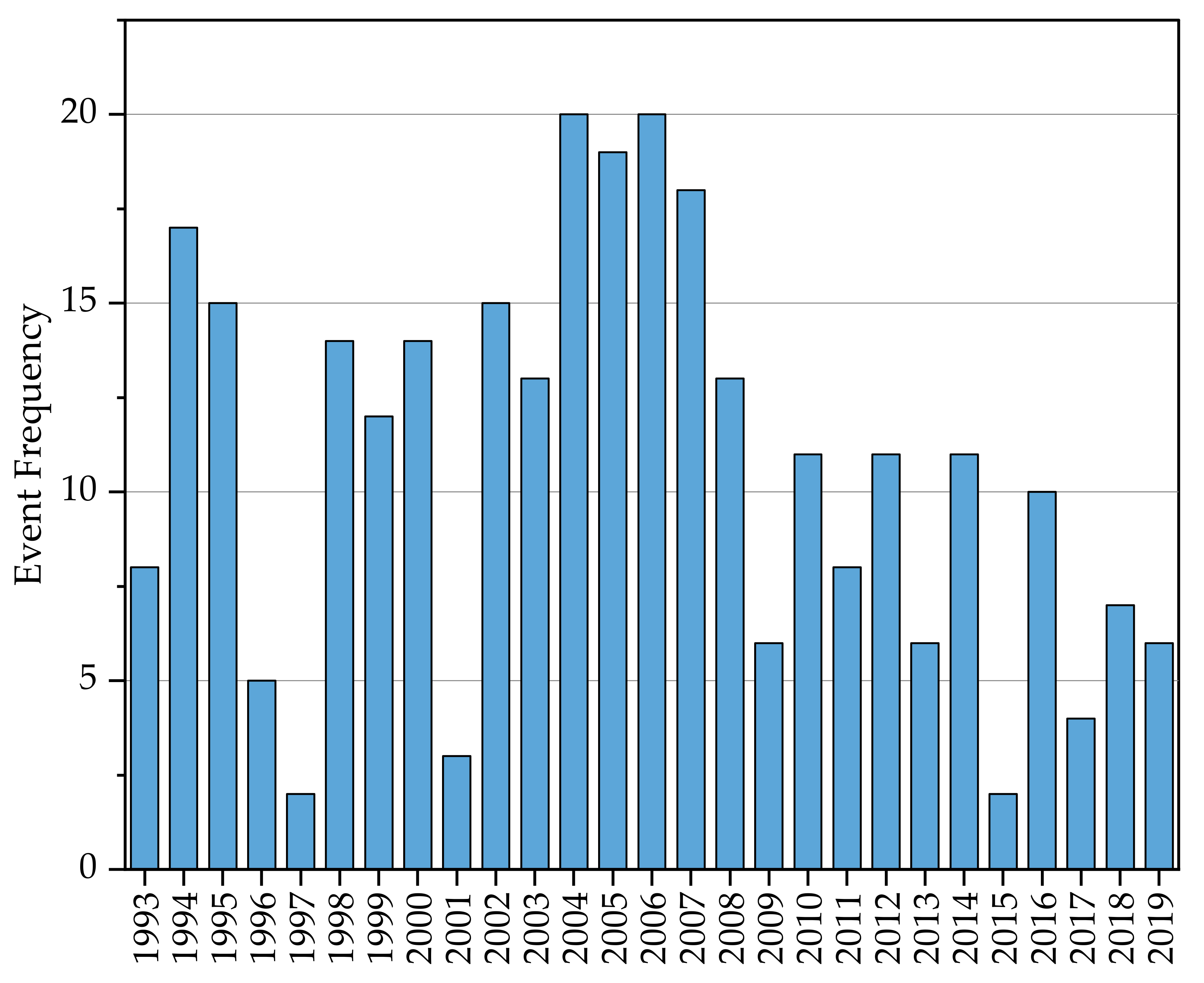
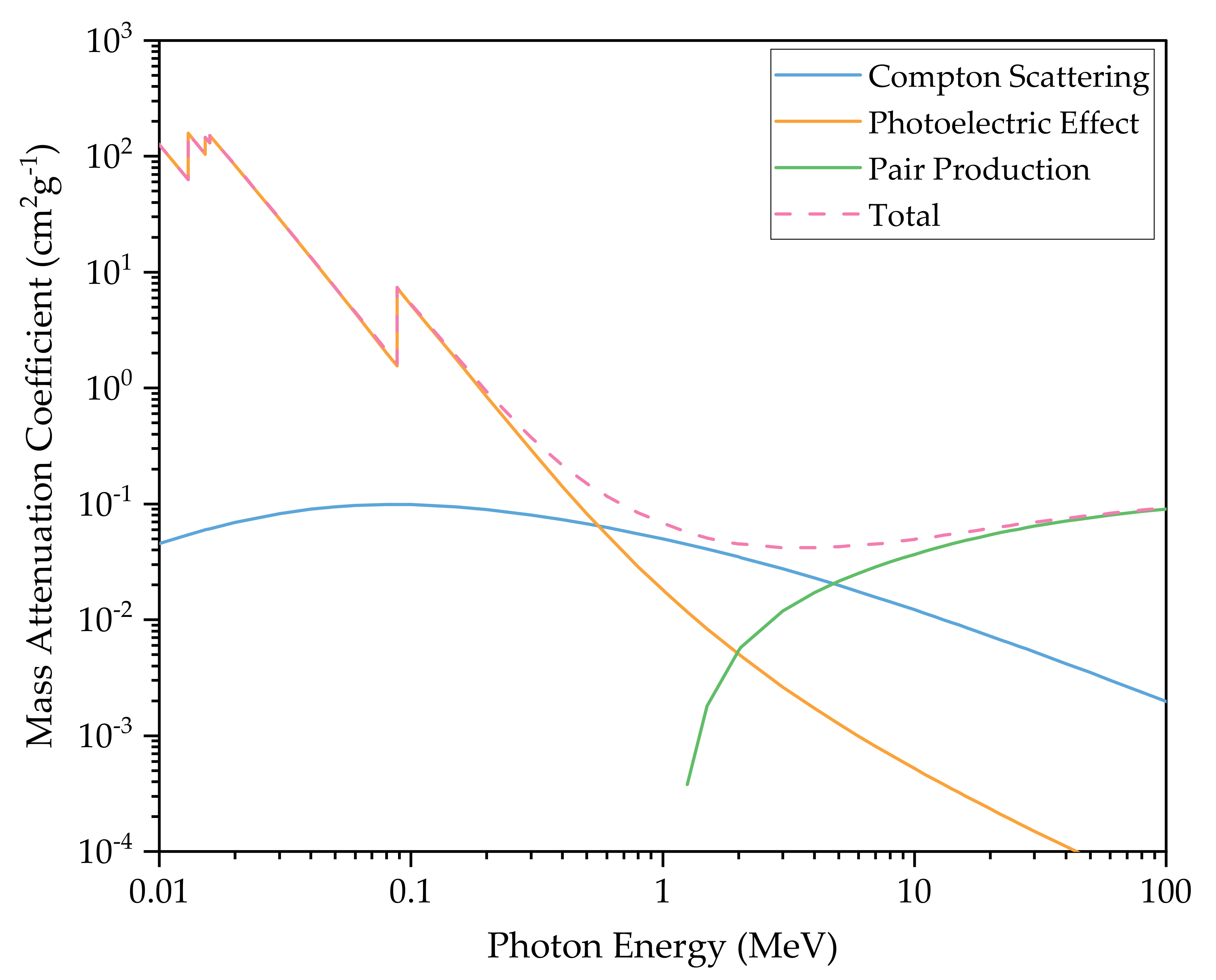

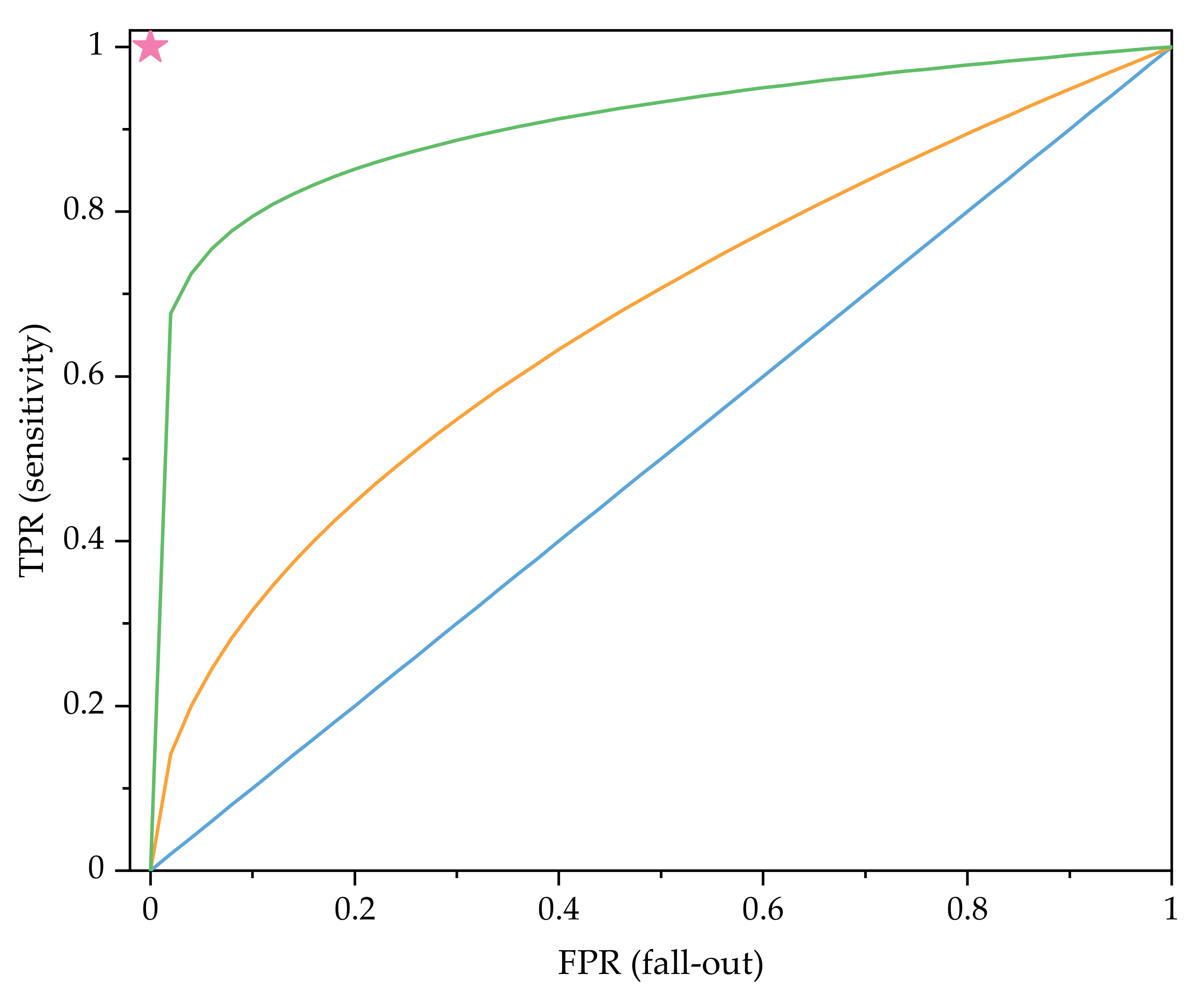
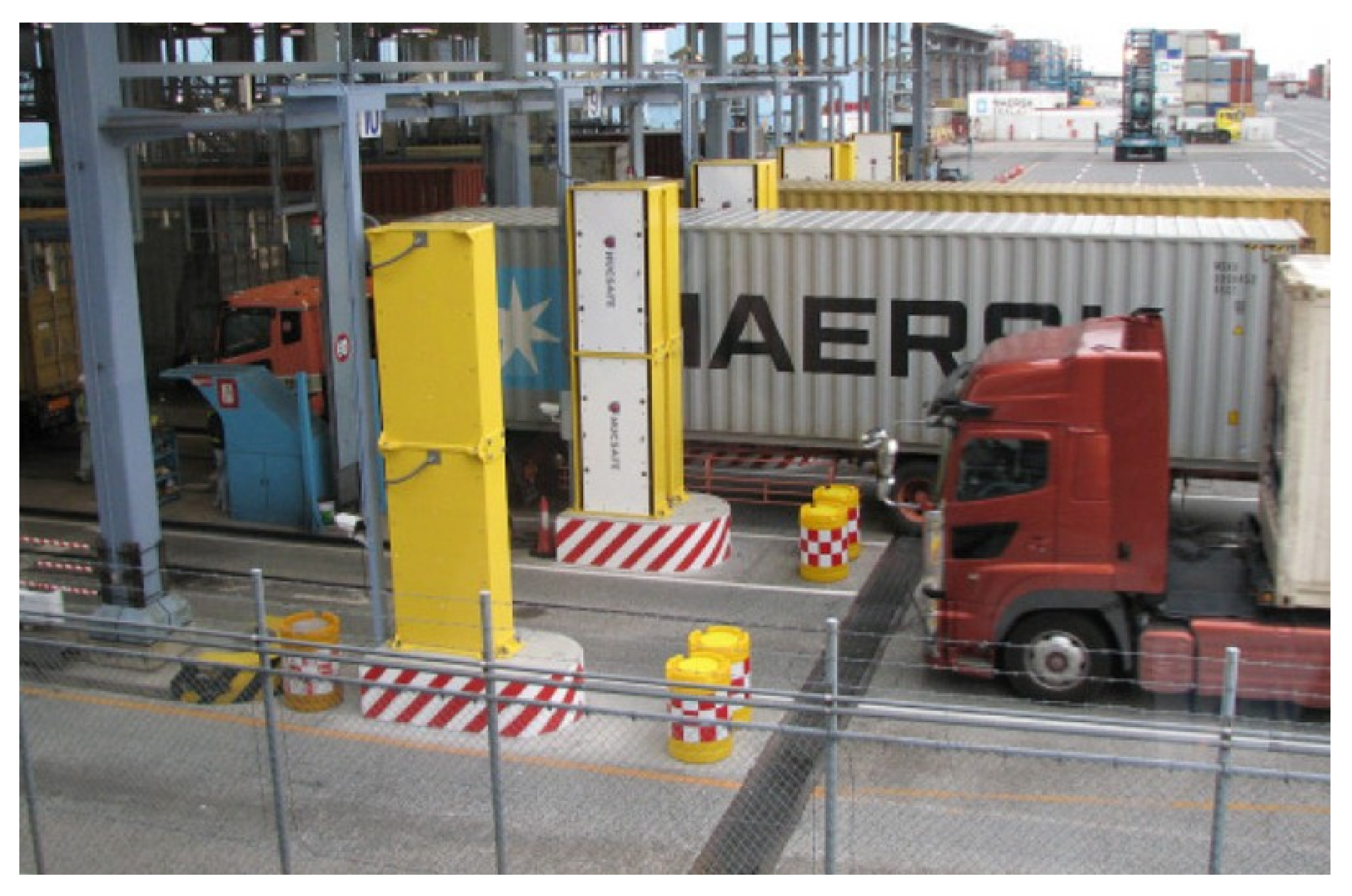
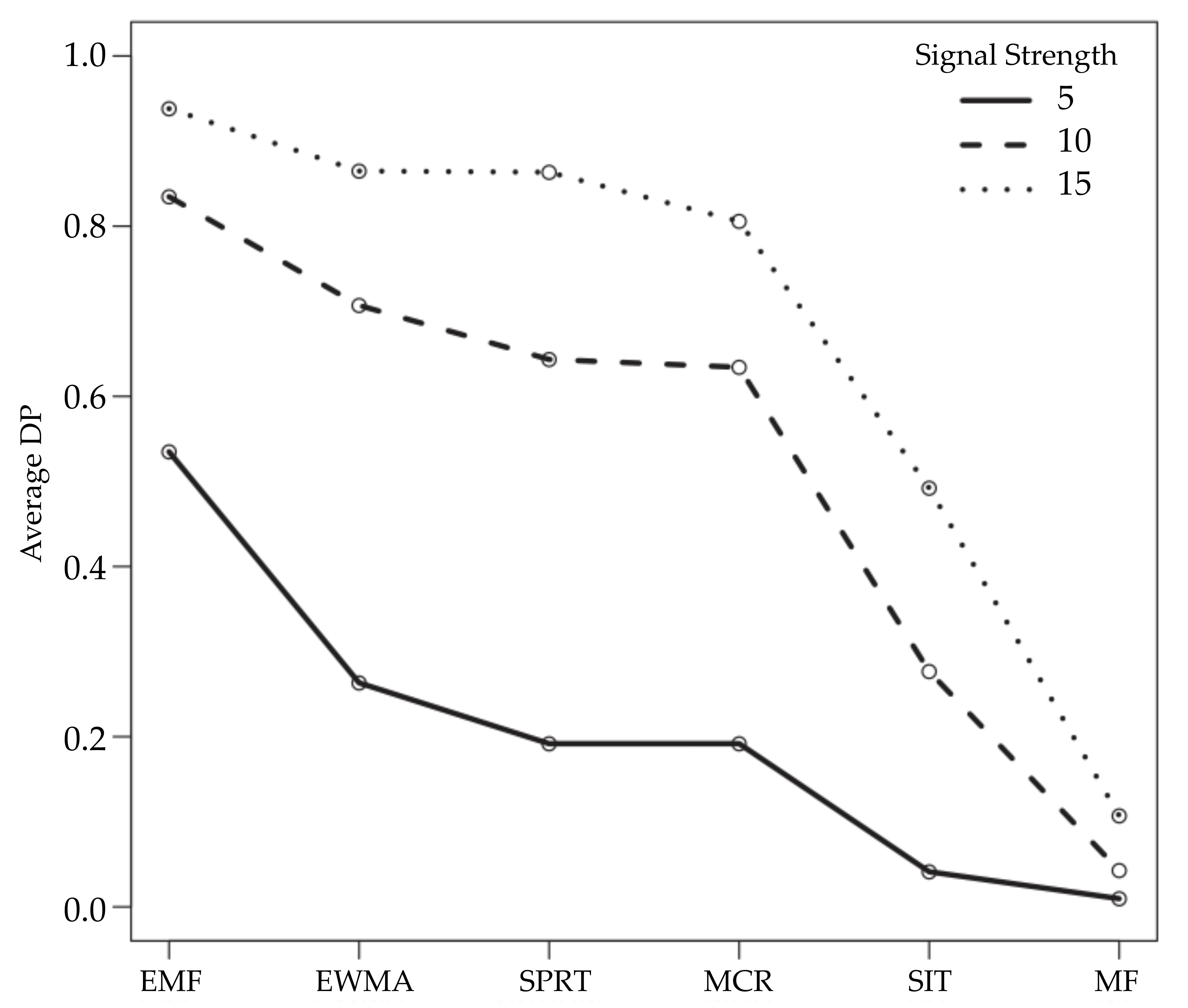
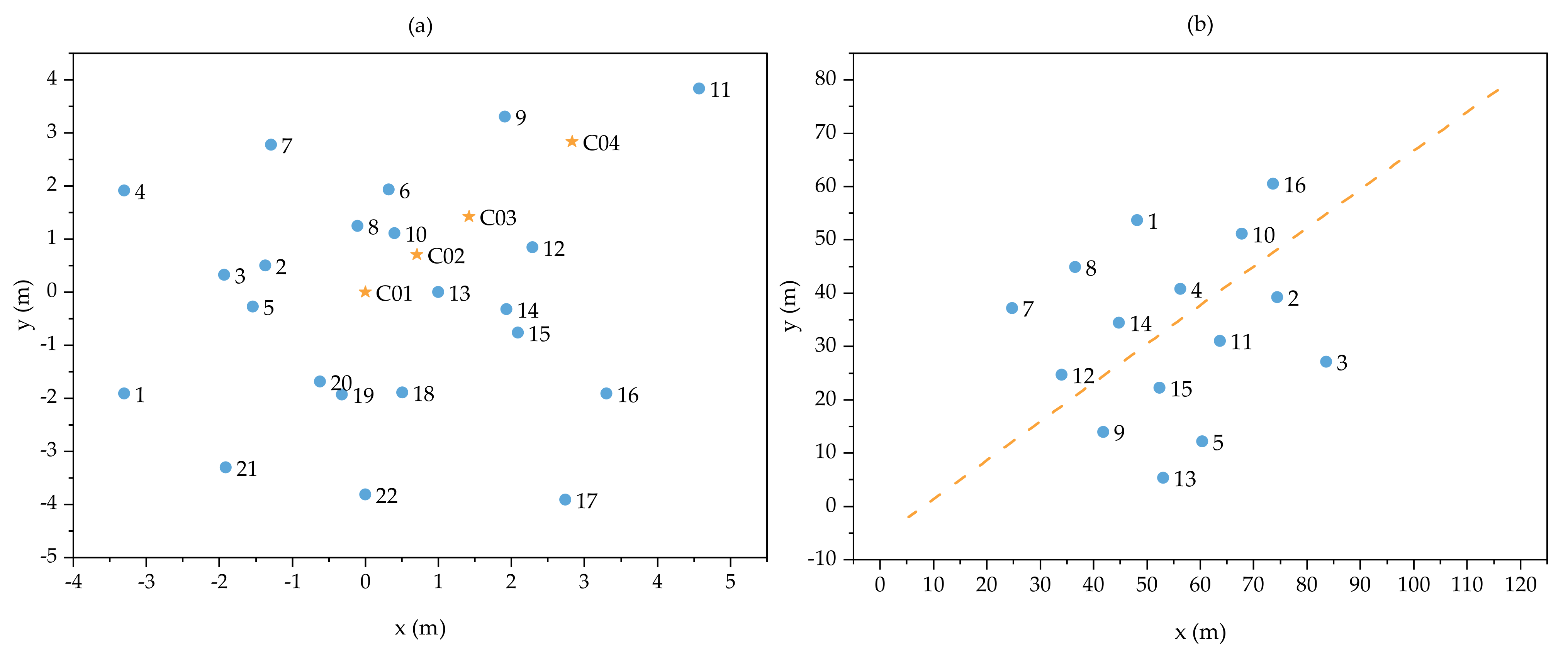
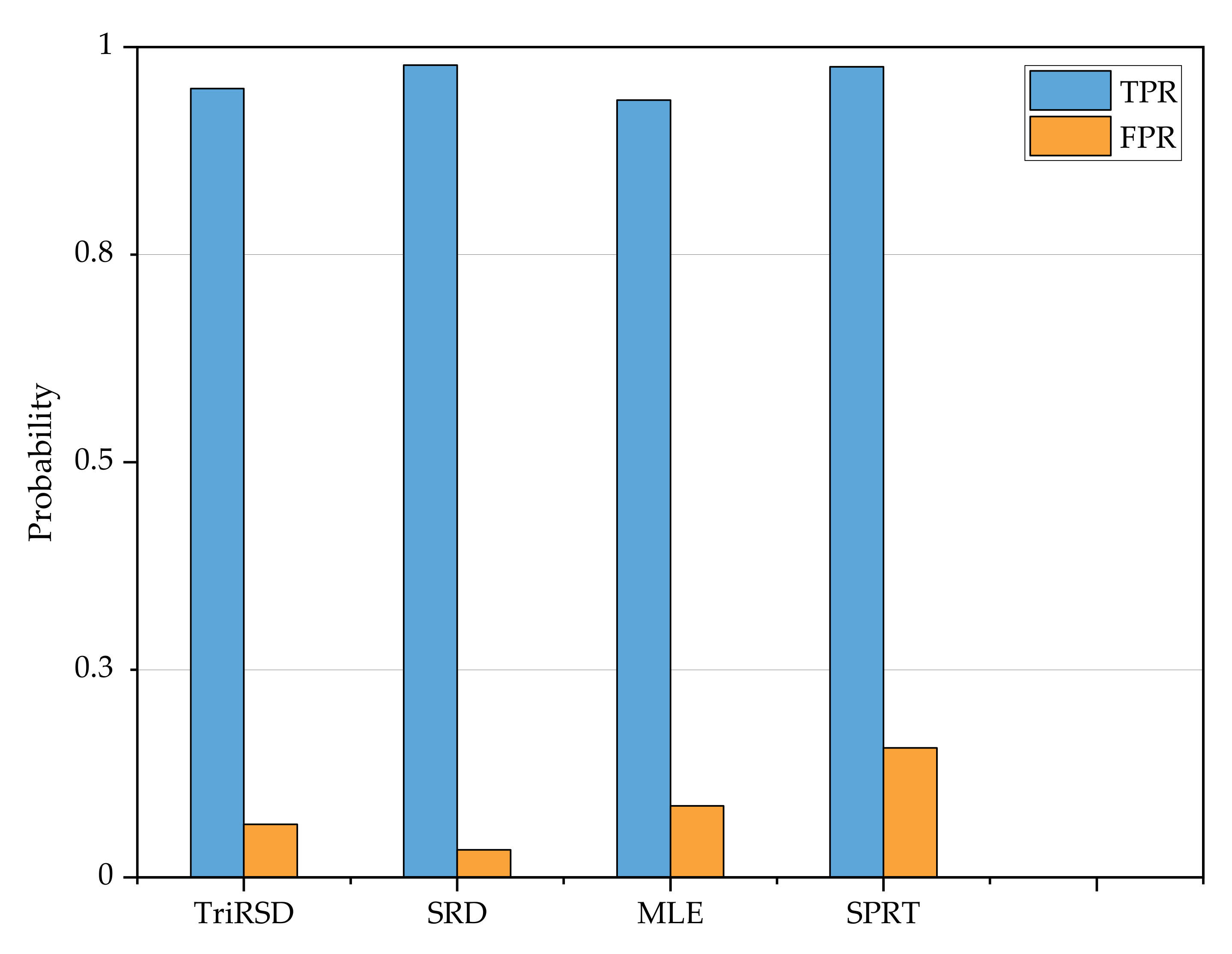
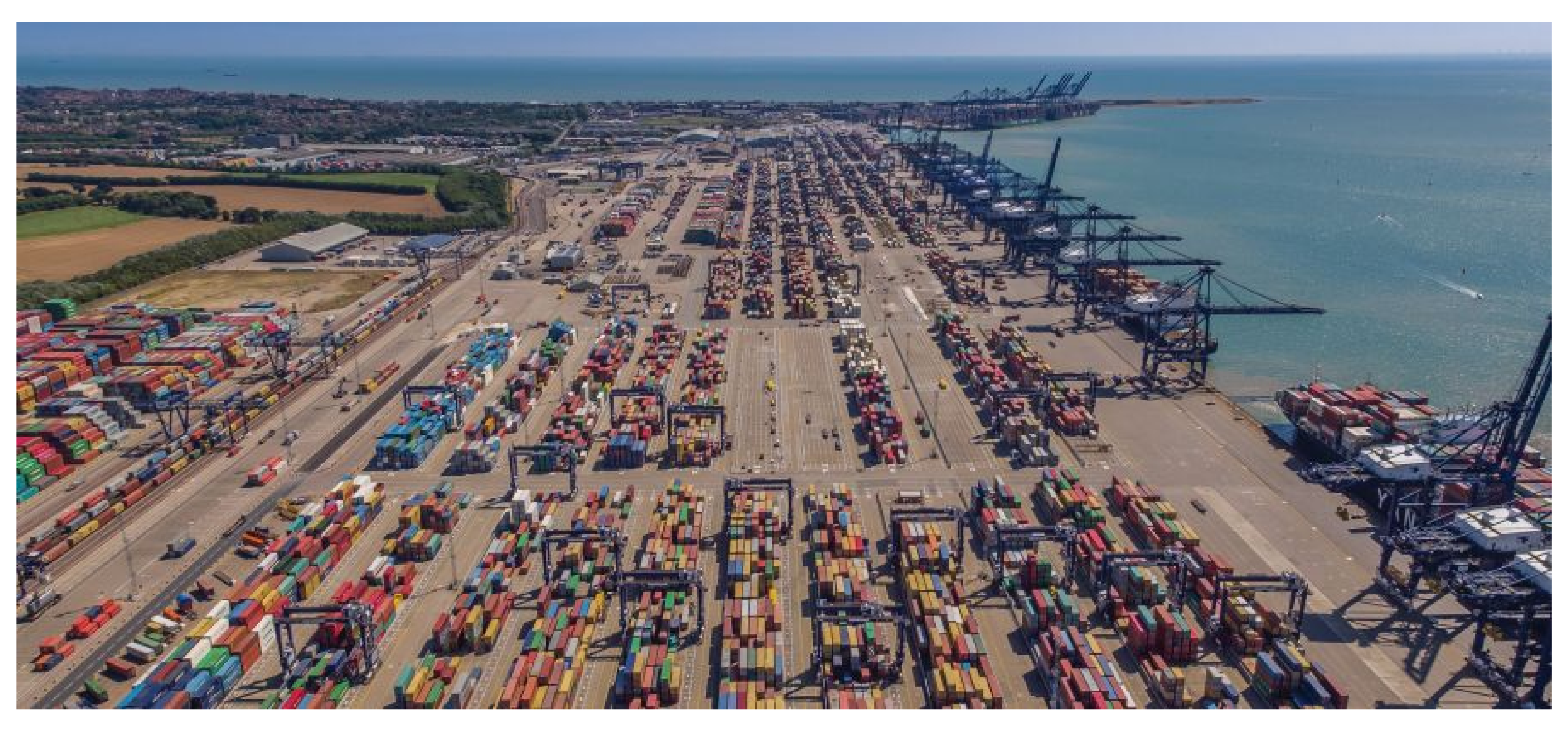
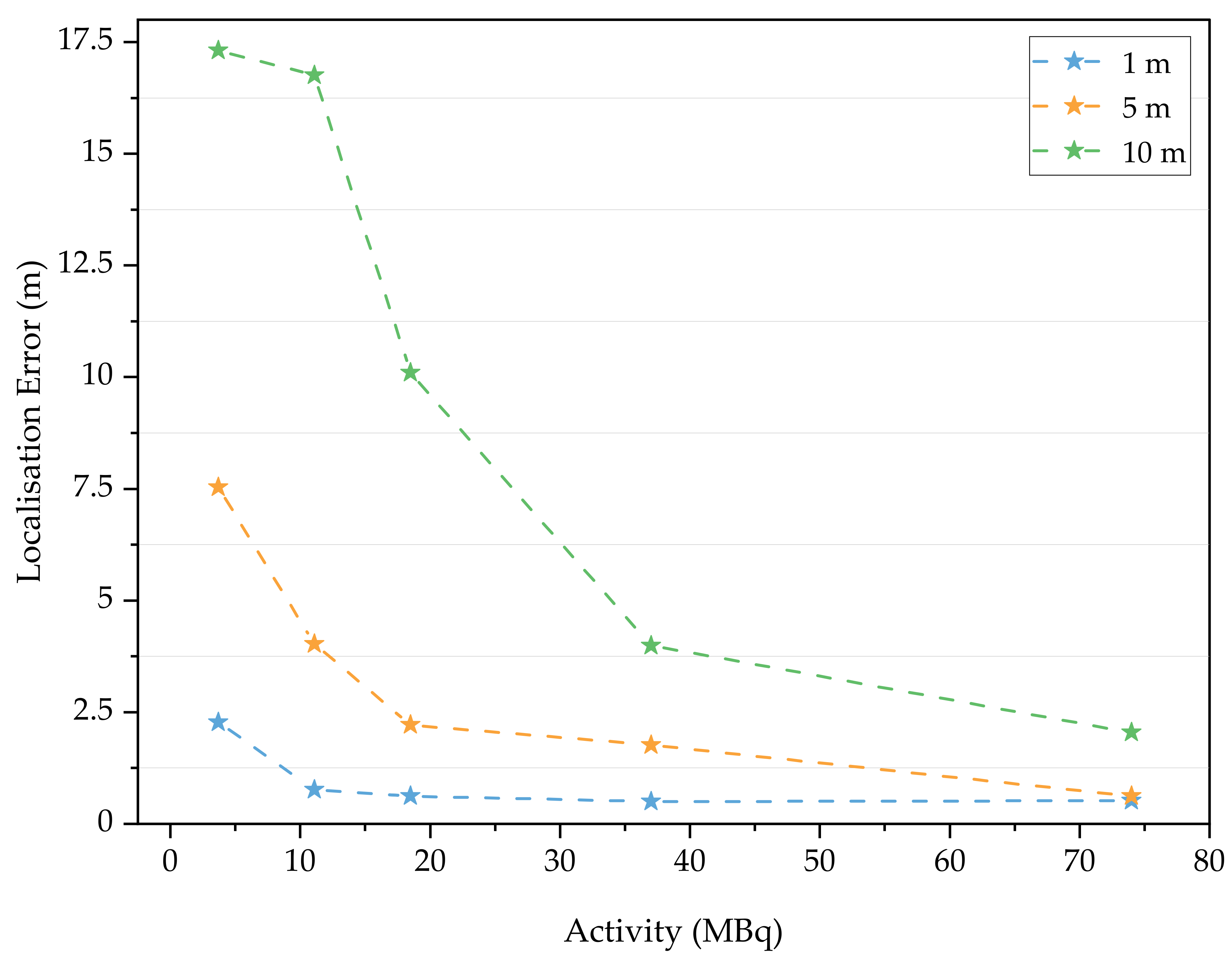
| Material | Z (Effective Z) | Density (g cm−3) | Light Yield (ph/keV) | Energy Res. (FWHM at 662 keV) | Available Sizes | Notes | Refs. |
|---|---|---|---|---|---|---|---|
| PVT | 1, 6 | 1.02 | ∼10 | – | ∼m2 | Plastic | [26,30] |
| EJ-309 | 1, 6 | 0.96 | 12.3 | – | Liquid | [24,31] | |
| NaI(Tl) | 11, 53, (56) | 3.67 | 38–55 | 7.0 % | cm3 | Hygroscopic | [24,26,32,33] |
| CsI(Tl) | (54) | 4.51 | 54 | <12 % | cm3 | [27,33,34] | |
| LaBr(Ce) | 35, 57 | 5.29 | 63 | 2.7 % | cm3 | Hygroscopic | [24,33,35] |
| LYSO(Ce) | (65) | 7.1 | 25–33 | <15 % | cm3 | 176Lu activity | [33,36,37] |
| CLYC(Ce) | (54) | 3.31 | 20 | 4.8 % | cm3 | Hygroscopic, | [38,39] |
| internal activity |
| Requirement | Metric | Methods to Meet Requirement |
|---|---|---|
| High sensitivity | TPR | Use high-efficiency radiation detectors; maximise the duration for |
| inspection to take place; position detectors close to shipping containers. | ||
| Minimise false alarms | FPR | Use high energy resolution detectors to identify threat sources; |
| use advanced algorithms to process data from low energy resolution | ||
| detectors; continuously monitor background radiation. | ||
| High throughput | Delays | Minimise duration of inspection; inspect shipping containers in transit; |
| caused | minimise false alarms. | |
| Affordability | £ | Choice of detector material; number of screening systems required per |
| seaport; minimise manual operational requirements. | ||
| Mobility | Mount the screening system on a vehicle. | |
| Durability | Use weather resistant materials in detector housing. | |
| Isotopic identification | Detector | Use high-resolution detector materials; use high-efficiency detectors; |
| resolution | implement peak identification algorithms. | |
| Source localisation | Localisation | Use a distributed array of detectors; use advanced data processing |
| error | techniques to estimate source location; choose an appropriate | |
| arrangement and number of detectors. |
| Method | Refs. | Source | Source Speed | IP | Notes |
|---|---|---|---|---|---|
| EW | [15,72,73] | 555 cps 137Cs | - | 1.0 | Theoretical source profiles injected |
| 1110 cps WGPu | - | 1.0 | into existing non-alarming vehicle | ||
| RPM data. | |||||
| LSF | [74] | 370 kBq 137Cs | 2.2 ms | 0.83 | Single panel pedestrian RPM; LSF |
| 259 kBq 60Co | 2.2 ms | 0.67 | to cumulative count distribution; | ||
| 6.6 g WGPu (93% 239Pu) | 1.2 ms | 0 | EJ-309 organic scintillator. | ||
| SAM | [75] | 370 kBq 137Cs | 2.2 ms | 1.00 | Single panel pedestrian RPM; |
| 6.6 g WGPu (93% 239Pu) | 2.2 ms | 0.93 | EJ-309 organic scintillator. | ||
| Energy | [76,77] | 340 kBq 137Cs | 2.8 ms | 0.6 | PVT-based vehicle RPM. |
| weighted | 237 kBq 60Co | 2.8 ms | 0.8 |
| Method | Validation Dataset | TPR | FPR | Localisation | Refs. |
|---|---|---|---|---|---|
| MLE | 3 min of measurement of a 189 kBq 137Cs source | 1.0 | Unknown | Within 0.6 m | [88] |
| using 7 NaI(Tl) detectors in a 5 × 5 × 5 m volume. | |||||
| MLE | IRSS LSI, C11, B14. | 0.986 | 0.086 | - | [89] |
| SPRT | IRSS LSI, C11, B14. | 0.976 | 0.156 | - | [89] |
| TriRSD | IRSS LSI, C11, B14. | 0.950 | 0.064 | - | [89] |
| SRD | IRSS LSI, C11, B14. | 0.978 | 0.033 | - | [89] |
| PF | 5 min of IRSS LSI_C data. | 1.0 | Unknown | Within 1.5 m | [92] |
| PF | Periphery detectors in IRSS C11. | 1.0 | Unknown | - | [90] |
Publisher’s Note: MDPI stays neutral with regard to jurisdictional claims in published maps and institutional affiliations. |
© 2021 by the authors. Licensee MDPI, Basel, Switzerland. This article is an open access article distributed under the terms and conditions of the Creative Commons Attribution (CC BY) license (https://creativecommons.org/licenses/by/4.0/).
Share and Cite
Connolly, E.L.; Martin, P.G. Current and Prospective Radiation Detection Systems, Screening Infrastructure and Interpretive Algorithms for the Non-Intrusive Screening of Shipping Container Cargo: A Review. J. Nucl. Eng. 2021, 2, 246-280. https://doi.org/10.3390/jne2030023
Connolly EL, Martin PG. Current and Prospective Radiation Detection Systems, Screening Infrastructure and Interpretive Algorithms for the Non-Intrusive Screening of Shipping Container Cargo: A Review. Journal of Nuclear Engineering. 2021; 2(3):246-280. https://doi.org/10.3390/jne2030023
Chicago/Turabian StyleConnolly, Euan L., and Peter G. Martin. 2021. "Current and Prospective Radiation Detection Systems, Screening Infrastructure and Interpretive Algorithms for the Non-Intrusive Screening of Shipping Container Cargo: A Review" Journal of Nuclear Engineering 2, no. 3: 246-280. https://doi.org/10.3390/jne2030023
APA StyleConnolly, E. L., & Martin, P. G. (2021). Current and Prospective Radiation Detection Systems, Screening Infrastructure and Interpretive Algorithms for the Non-Intrusive Screening of Shipping Container Cargo: A Review. Journal of Nuclear Engineering, 2(3), 246-280. https://doi.org/10.3390/jne2030023







